How to Evaluate CRM Software: Key Criteria and Best Practices
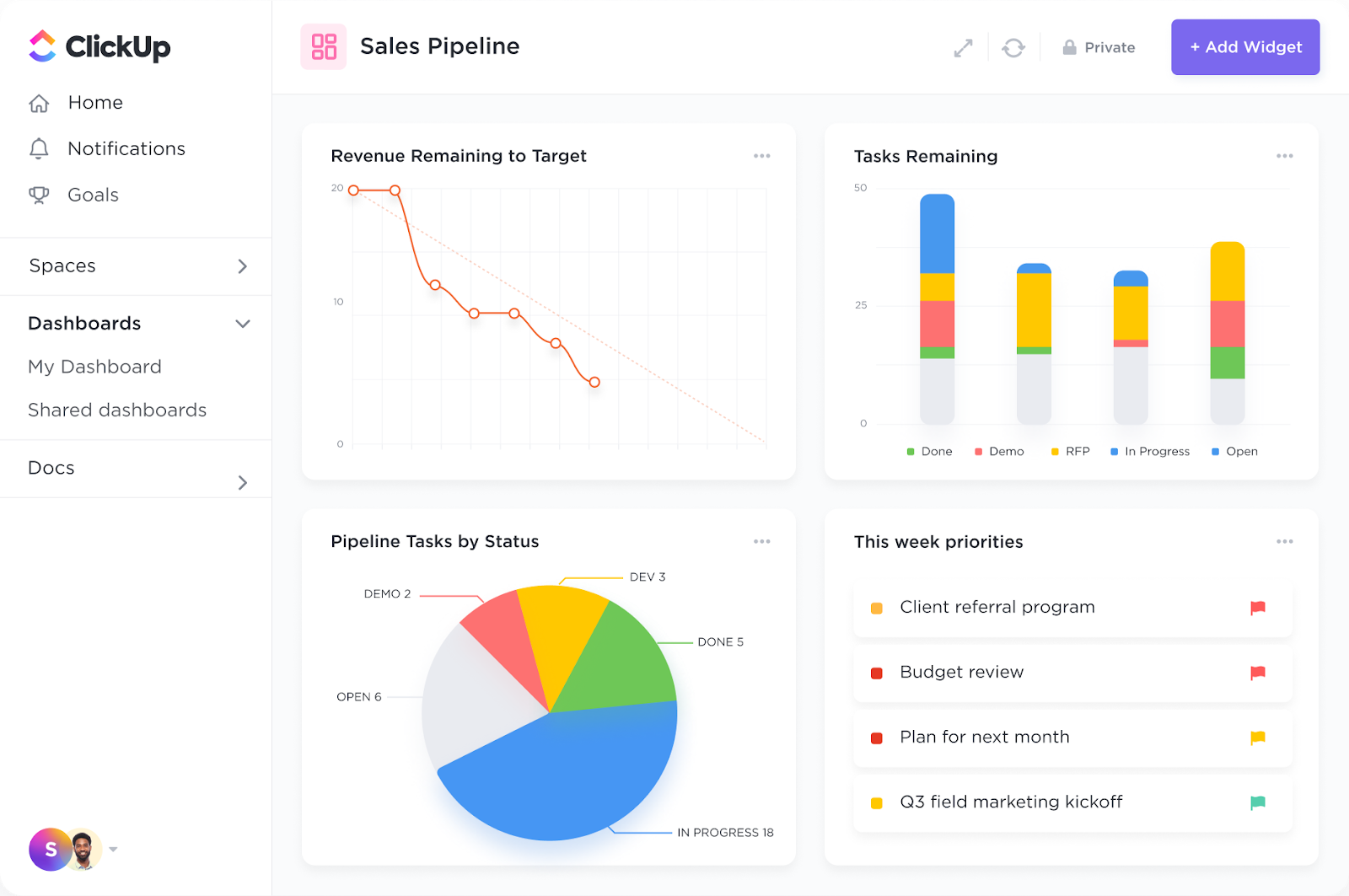
Sorry, there were no results found for “”
Sorry, there were no results found for “”
Sorry, there were no results found for “”

Your sales team is drowning in scattered customer data. The marketing department can’t tell which leads are hot and which have gone cold. And your support staff? They’re struggling to piece together customer histories from a dozen different spreadsheets.
If this hits close to home, you’re in dire need of an effective CRM. This also means you’d have to conduct a proper CRM software evaluation.
The right CRM solution does more than store contact details—it becomes your central hub for managing customer relationships, tracking sales pipelines and sales revenue, and making data-driven decisions. That’s why having a solid CRM evaluation checklist is crucial before you commit.
Let’s explore the key factors in evaluating CRM systems to find the perfect fit for your business.
Here’s how to do an effective CRM software evaluation:
CRM evaluation ensures you’re equipped to manage customer relationships effectively. Let’s look at this process closely.
CRM evaluation is the process of assessing different CRM software options to find the one that best meets your business needs. This involves analyzing features, usability, cost, and vendor reliability to ensure the chosen solution aligns with your goals for customer management, sales, and marketing campaigns.
The goal is to ensure the chosen CRM software supports your team’s workflow, enhances customer engagement, and drives measurable outcomes.
👀 Did You Know? Improving customer experience is the top priority for 75% of businesses investing in CRM. They also want to boost their own efficiency with CRM software. It’s a win-win)
Choosing the right CRM solution is like hiring the perfect employee—it should make your life easier, not harder. It also leads to:
Evaluating multiple CRM software options ensures you avoid costly mismatches. There’s no one-size-fits-all solution, so you need to consider the CRM evaluation criteria listed below:
A CRM platform should simplify your work, not complicate it.
For example, if your sales team struggles to track leads, look for a CRM with drag-and-drop pipelines or visual dashboards. Look for intuitive interfaces requiring minimal training, allowing teams to navigate effortlessly. That’s why customizable CRM software becomes a powerful solution.
Here are some things to ask during a CRM demo:
Does your team lose time toggling between tools? A CRM that integrates with your email platform (e.g., Gmail or Outlook), marketing software, or accounting tools (like QuickBooks) can centralize workflows and eliminate manual data transfers.
Things to check for:
Choose a system with powerful APIs or pre-built integrations to streamline operations.
If your business tracks unique metrics or workflows, a one-size-fits-all CRM won’t cut it. For instance, a real estate firm might need custom fields for property details, while an e-commerce business might prioritize order tracking.
Features to check for:
Select a CRM that allows you to tweak fields, reports, and workflows to fit your needs.
Scaling your business can hit hard if your CRM doesn’t keep up. For example, if your team expands from 10 to 50 users, your CRM should handle the increased load without performance issues. Opt for platforms that offer tiered plans to scale features as your business grows.
Ask the following questions:
Manual tasks like sending follow-up emails or assigning leads can drain time and lead to errors. A CRM with automation features can automatically assign new leads to sales representatives or send reminders for overdue tasks.
Look for systems that reduce repetitive work and keep your team focused on what matters.
Consider the following questions:
If you’re unsure where your sales pipeline is leaking, robust reporting tools can help.
A CRM with visual reports and trend analysis can highlight bottlenecks, such as delayed follow-ups or low conversion rates. Look for customizable reports and dashboards that provide actionable insights to improve decision-making.
Here are some things you should check on:
Imagine losing sensitive customer data to a breach—a nightmare scenario. A CRM with encryption, secure cloud storage, and compliance with regulations like GDPR or HIPAA ensures your data stays safe.
Additionally, cross-check on the following:
Platforms like Microsoft Dynamics or ClickUp offer built-in compliance tools for peace of mind.
Your sales team shouldn’t wait until they’re back at their desks to update a deal. A mobile-friendly CRM allows them to log calls, check customer details, or close deals. This is especially useful for field teams or remote work scenarios.
Look out for the following:
Even the best CRM can feel overwhelming without support. For example, if your team faces setup challenges, a CRM with 24/7 live chat or a dedicated account manager can resolve issues quickly.
Make sure to request specifics on the following:
To ensure a smooth transition, look for platforms offering onboarding sessions, tutorials, and a responsive support team.
🧠 Fun Fact: Before CRM systems, salespeople relied on Rolodexes and index cards to manage customer details—and you can still buy this 1950s invention on Amazon today, proving that some classics never go out of style!
📖 Also Read: CRM Strategy: CRM Strategies to Manage Your Business
Comparing CRM software requires a structured approach. Here’s a step-by-step approach to guide your CRM selection process:
Without a clear understanding of your objectives, you risk choosing a CRM that doesn’t address your pain points.
For example, a CRM with advanced pipeline management becomes essential if your main challenge is disorganized lead tracking. This step ensures that your choice aligns with specific needs, such as improving sales productivity, enhancing customer support, or streamlining communication.
The CRM market is vast, with solutions ranging from basic tools to complex platforms. Narrowing down options based on your business size, industry, and goals. This will save time and ensure you focus on the most relevant choices.
For example, a small business might prioritize affordability and ease of use, while a larger enterprise may need advanced analytics and scalability. This step is essential to reducing decision fatigue and ensuring you evaluate only those CRMs that truly meet your needs.
A CRM may look great on paper, but its usability and effectiveness can only be judged through hands-on experience.
Demos and trials let you explore features like navigation, reporting, and integrations in real-world scenarios. For instance, testing a CRM’s mobile app can reveal whether it meets the needs of your on-the-go sales team.
Your team will use the CRM daily, so their input is crucial. Sales associates might highlight issues like a clunky interface, while customer service support teams might need specific features for case management.
Involving end-users fosters buy-in, ensuring smoother adoption post-implementation. It further helps identify potential user challenges early, reducing resistance and increasing adoption rates.
The sticker price of a CRM often hides additional costs like implementation, training, and premium features.
For instance, a CRM might charge extra for analytics tools or API integrations. Calculating TCO ensures you’re budgeting realistically and avoiding unexpected expenses.A thorough calculation eliminates overspending and ensures you know the full financial commitment.
A CRM is only as good as the company behind it.
Evaluate potential CRM vendors and their reviews, case studies, and support quality. This ensures you partner with a reliable provider. For example, a CRM with 24/7 support and a strong user community can simplify troubleshooting.
Choosing the right CRM is just the beginning. A well-planned implementation—including data migration, team training, and workflow setup—ensures a smooth transition.
Determine how customer data will be imported to prevent downtime or loss during the switch. The idea is to avoid implementation hiccups and ensure the CRM delivers value from day one.
Finally, focus on how well the CRM aligns with your sales processes and customer management goals. A great CRM system doesn’t just store customer data—it empowers your sales professionals to close deals faster, track pipelines more effectively, and improve collaboration across departments.
💡Pro Tip: Ensure your customer lists are redundancy-proof using a cloud-based CRM system that automatically weeds out duplicate entries and runs accurate reports from cross-functional data.
📮ClickUp Insight: About 43% of workers send 0-10 messages daily. While this suggests more focused or deliberate conversations, it could also indicate a lack of seamless collaboration, with important discussions happening elsewhere (like email).
To prevent unnecessary platform hopping and context switching, you need an everything app for work, like ClickUp, that combines projects, knowledge, and chat in one place—all powered by AI that helps you work more efficiently.
The right tools and resources can turn a daunting CRM evaluation process into a well-informed and efficient decision-making journey, saving you time, money, and potential headaches down the road.
Here are some of the tools you would find most valuable:
Don’t just rely on CRM vendor promises—comparison websites like G2 and Capterra offer real-world insights from users who’ve walked the path you’re about to take. These platforms provide side-by-side comparisons, verified user reviews, and ratings highlighting pros, cons, and hidden pitfalls.
💡Pro Tip: Look for CRM vendor reviews from similar businesses to gauge how the CRM performs in your specific industry or use case.
Templates and checklists simplify the evaluation process by breaking it into actionable steps. These resources help you define priorities, compare options, and ensure no critical feature or functionality is overlooked.
Many templates even include scoring systems to help you rank CRM solutions objectively. Customize these to align with your unique business processes for a tailored evaluation.
Before committing to a CRM tool, gathering input from your team and existing customer inquiries is vital. Tools like surveys and customer feedback forms can provide valuable insights into what features your team needs and what your customers expect.
These tools ensure that your CRM meets internal operational needs and enhances the customer experience.
A CRM is an investment, and it is crucial to understand its return on investment (ROI).
Cost-benefit analysis tools can help you calculate the upfront costs and the long-term benefits, such as increased efficiency, higher sales conversions, and improved customer retention.
Avoiding these common mistakes while creating your CRM requirements checklist can prevent costly missteps and ensure you select a CRM that truly supports your business objectives.
Your team will be the primary users of the CRM, so their feedback is invaluable. Ignoring their input often leads to resistance during implementation and low adoption rates.
How to overcome it: Engage your team early—ask them about their pain points with current tools and what features they’d find most beneficial. A CRM that excites your team will drive productivity and deliver better results.
Switching to a new CRM isn’t just about adopting a new tool—it’s about seamlessly migrating your existing data. Overlooking the complexity of data migration can result in data loss, duplication, or inaccuracies that disrupt workflows.
How to overcome it: Evaluate the CRM’s migration support services and ensure it can handle your data formats and volumes without compromising quality.
No matter how intuitive a CRM may seem, a lack of proper training can lead to underutilization or even abandonment. Many businesses underestimate the time and resources required to onboard their teams effectively.
How to overcome it: Choose a CRM that offers comprehensive training resources, such as tutorials, webinars, and dedicated support, to help your team hit the ground running.
While cost is essential, prioritizing the cheapest option often leads to choosing a CRM that doesn’t align with your long-term needs. A bargain CRM that lacks scalability or essential features can end up costing you more in lost productivity and frequent upgrades.
How to overcome it: Instead, focus on the total cost of ownership (TCO), factoring in features, integrations, and future scalability to ensure you’re investing in a solution that grows with your business.
Businesses often struggle with siloed tools, disjointed workflows, and scalability issues when evaluating different CRM solutions.
ClickUp solves these challenges by combining the CRM’s essential functionalities with a holistic approach to work management. This makes it an invaluable tool for businesses looking to streamline operations, enhance collaboration, and maximize productivity.
ClickUp’s CRM Project Management Software is a unified end-to-end customer relationship management platform.

Traditional CRMs often focus solely on customer data and sales pipelines, requiring additional tools for project management, collaboration, and task tracking.
CRM in ClickUp eliminates this fragmentation by offering an all-in-one platform where teams can manage everything—from lead generation and lead management to post-sale support—without switching tools.
For example, ClickUp Dashboards consolidate key metrics like lead conversions, deal values, and team performance into a single view, enabling decision-makers to track real-time progress.
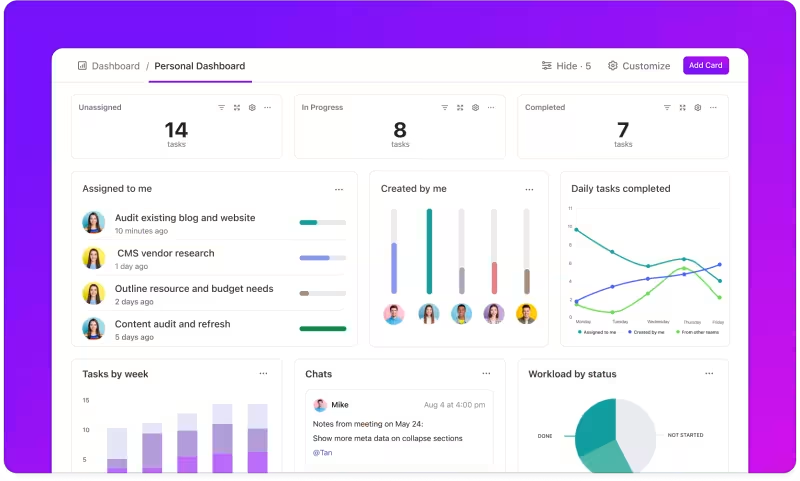
This holistic approach reduces inefficiencies and allows businesses to manage customer relations within broader organizational goals and objectives.
Optimize your CRM by learning the best practices for creating a comprehensive ClickUp Dashboard view.
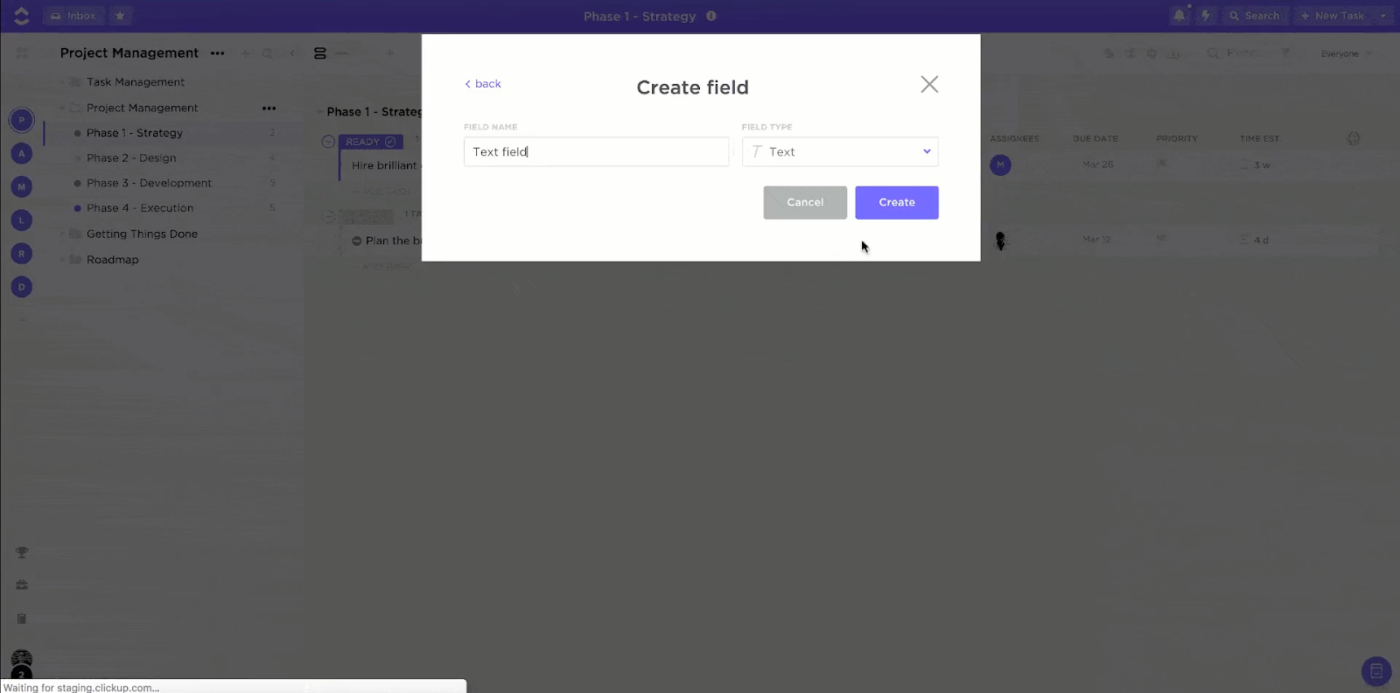
No two businesses are alike, and ClickUp recognizes this by offering unparalleled customization options. ClickUp Custom Fields allows businesses to track specific data points relevant to their industry, such as deal stages, contract renewal dates, or customer satisfaction scores.
Additionally, ClickUp’s pre-built templates provide a head start for creating tailored workflows.
For instance, the ClickUp CRM Template is designed to help you effortlessly track leads and opportunities through customizable pipelines, keep all contact information in one organized database, and prioritize tasks by sales stage for more effective management.
It allows businesses of all sizes to manage customer relationships efficiently and effectively.
Additionally, use the ClickUp Sales CRM Template and ClickUp CRM Template for Beginners to manage and track leads and visualize sales opportunities in a sales funnel.
ClickUp helps us organize our product and feature roadmap so we can easily introduce new features and functionality to customers, and continually check to see how we’re progressing toward our goals. At the end of the day, our number one goal is to make better products for our customers, and ClickUp helps us do that.
Manual processes can slow operations and introduce errors, especially in sales and customer management. ClickUp Automations enables you to eliminate repetitive tasks, such as updating lead statuses or sending follow-up emails.

For example, a sales manager can set up an automation to notify the team when a high-value deal reaches a critical stage, ensuring timely action.
🧠 Fun Fact: 96% of participants in a survey agree that accurate CRM data can improve conversion rates.
One of the biggest hurdles in adopting a new CRM is ensuring it integrates smoothly with existing systems. ClickUp Integrations allow you to connect with tools like Salesforce, HubSpot, Slack, and Google Workspace.

For example, marketing teams can sync ClickUp with email platforms to track CRM campaign performance, while sales teams can integrate with communication tools to streamline client interactions.
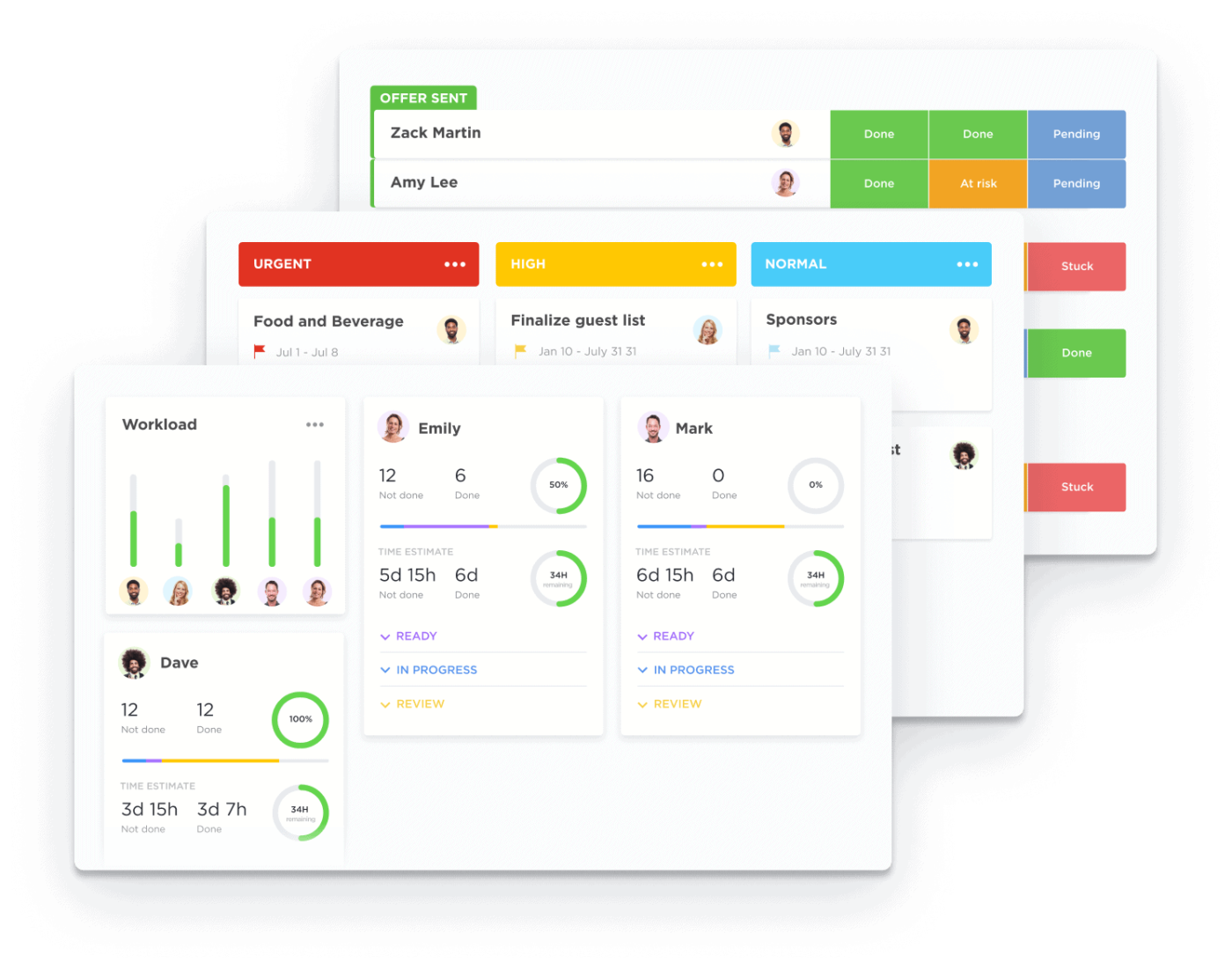
Also, ClickUp Sales Project Management Software is a powerful option that integrates seamlessly with sales management. It combines CRM functionalities with sales pipeline tracking, task automation, and real-time dashboards, ensuring your team has everything they need to close deals faster.
ClickUp’s modular design makes it ideal for businesses at any stage of growth. Startups can begin with basic CRM functionalities and scale up as their needs evolve, adding features like advanced automation or detailed analytics.
What’s more? ClickUp’s in-house AI assistant, ClickUp Brain, helps teams work smarter, not harder.
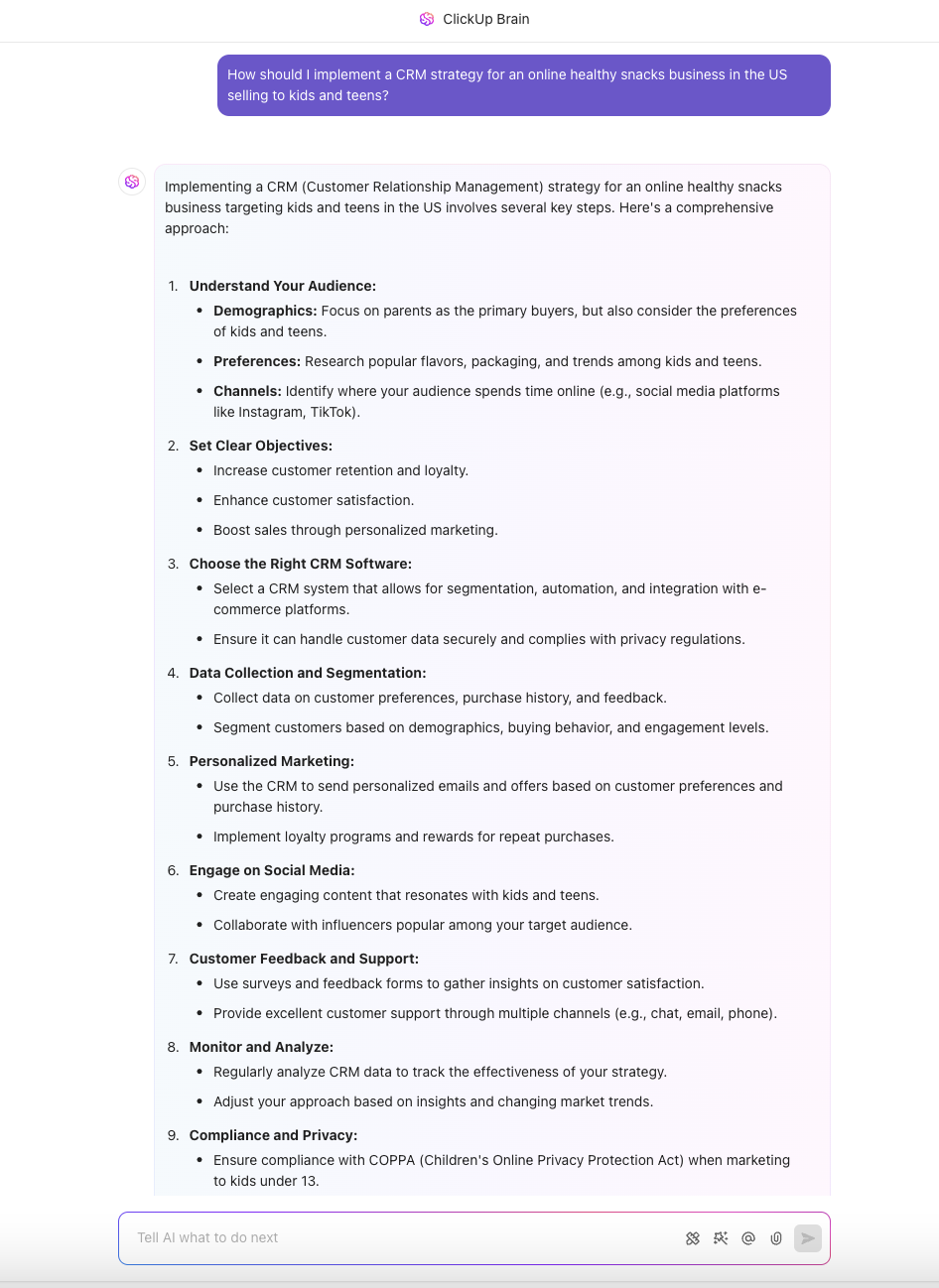
From prioritizing tasks to generating actionable insights, its AI features ensure businesses can focus on what matters most—building strong customer relationships, improving customer satisfaction, and driving growth.
Quick Hack: Use ClickUp Brain to generate role-specific starting points for customer success—sales teams can draft follow-ups, marketing can outline campaign ideas, and customer success teams can plan personalized outreach.
Selecting the right CRM isn’t just about ticking off a checklist of CRM components and valuable features—it’s about finding a tool that aligns seamlessly with your business goals, empowers your team, allows tracking key performance indicators (KPIs), and scales with your growth.
ClickUp isn’t just an excellent CRM—it’s the everything app for work. It combines project management, knowledge management, and chat into one powerful platform, all backed by AI to help you work faster and smarter.
By choosing ClickUp, you’re investing in a solution that grows with your business, facilitates operations, enhances user adoption, and ensures your team is equipped to deliver exceptional customer experiences.
Try ClickUp today!
© 2025 ClickUp